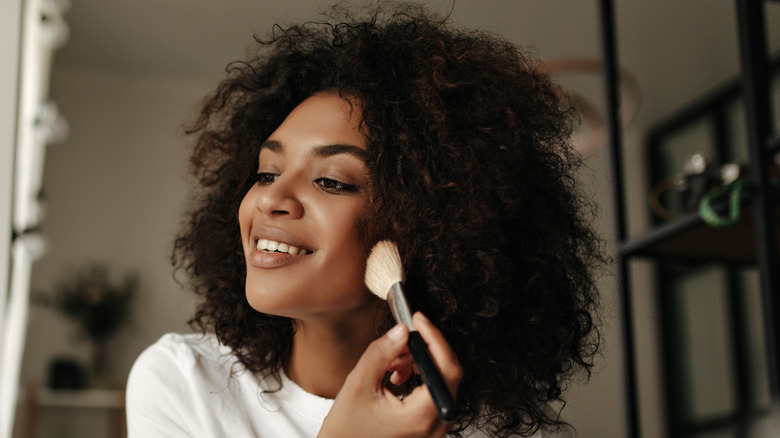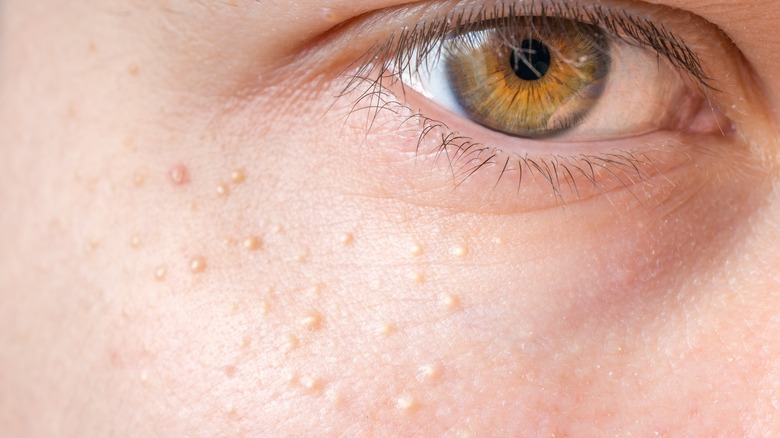Does Makeup Cause Milia?
Those who have struggled with skin problems know that it can wreak havoc on your self-esteem. While acne is one of the most common problems people face, there are many other skin conditions that resemble the condition (via Insider). Figuring out what exactly is going on with your skin is important so you can find a treatment option specific to you.
One skin condition that you might at first mistake for acne is milia. These little white bumps that form on your cheeks, nose, and chin may look like pimples but are in fact small pockets of keratin. Dr. Adarsh Vijay Mudgil, board-certified dermatologist and assistant clinical professor at Mt. Sinai Hospital, told Refinery29, "Keratin is made in our skin cells and transported to the outer layer of our skin. Sometimes it get stuck in transit — that's basically what a milial cyst is."
There are two types of milia: primary and secondary. While both look the same, primary milia aren't usually caused by skin damage. Secondary milia, on the other hand, is associated with damage to the skin caused by sunburns, blisters that you might get from poison oak or ivy, or other skin injuries (via Skin Sight).
Common causes of milia
While sun damage and injury to the skin can cause milia, so can makeup and other beauty products. Celebrity esthetician Vanessa Hernandez told Total Beauty, "In the case of milia, the pore becomes full with excess oil, makeup, etc. then the skin actually grows over the pore, trapping it in."
While milia are not always preventable, having a good skincare regime can go a long way in avoiding them (via Cleveland Clinic). Regularly cleanse and exfoliate your skin and use sunscreen whenever you go outside.
Even though milia aren't harmful to your health, it's understandable that you would want to get rid of them for cosmetic purposes. Remember that even though they may look like little pimples, they're not considered acne so don't try and pop them. This will only damage your skin and make it look worse (via Cleveland Clinic). According to Verywell Health, products with salicylic acid and glycolic acid can help to slowly slough off the top layers of skin, eventually removing the milia. If this doesn't work for you, you can make an appointment with your doctor or dermatologist to learn what your other options are.


